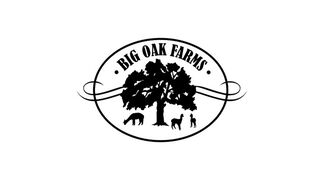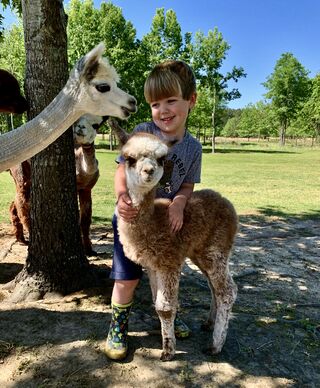Choke in Alpacas
Tuesday, March 29, 2022
The first time you witness "choke" it can be a bit intimidating. For us, we had just changed feed to a smaller extruded pellet. We feed in troughs roughly 21 inches off the ground but we did not spread the feed out in the trough. Classic mismanagement, this lead to the alpacas feed being "clumped in piles" which in turn allowed them to grab a large mouth full of feed and swallow it repeatedly. Alpacas have a dental pad on the roof of their mouth, they do not chew food as much as swallow it whole.
X Signs include gagging, coughing, and regurgitating immediately after eating. Choking is due to the blockage of the upper airways. The body tries to cough out the blockage while struggling for oxygen at the same time in order to survive. Most often choke is from eating grain too rapidly or it may be due to the type of grain being fed. Pellets that are rather hard and small in diameter will cause less choking problems.
X When the animal is coughing and regurgitating, often you can see or feel a "ball" of food lodged somewhere in the esophagus. You can help work it out by massaging with upward movements on the neck area to remove the blockage. Be sure no food or water is available to the animal until after the blockage is removed. During a less severe blockage in the esophagus, you may see regurgitation or throwing up - most likely dissolved feed that was just recently eaten. With a complete obstruction, immediate emergency methods must be taken to remove the blockage and ensure the animal's ability to breathe.
X Most of the time the cause of choking, if not due to the size of the pellets, is due to feeding management and behavior. Feeding management can be improved immensely by feeding in long, shallow troughs which forces them to eat slower and take smaller mouthfuls. Deep dishes encourage fast eating and enables them to get large, gulping mouthfuls which is conducive to choke. Make sure there is sufficient feeding space so all animals can eat comfortably without being intimidated by others. Another helpful method is to put large rocks in the feeding dish and layer the feed pellets with hay to slow down the consumption of feed
Pellet consumption and rate of intact needs to be slowed, but when you have hungry and some just greedy livestock who fight for the last bits of feed it can lead to them gobbling up their feed. Some have suggested, placing large stones in their feed troughs as well as covering their feed with loose hay as a method to slow pellet intake. We have found feeding in long troughs produced the best desired results. We spread their feed down the entire length of the trough to prevent "clumping" of feed in one or two piles. This also allows the more timid alpacas to get away from Mr. Bossy and get their fill of feed without feeling the need to "Gulp" down their fee.




